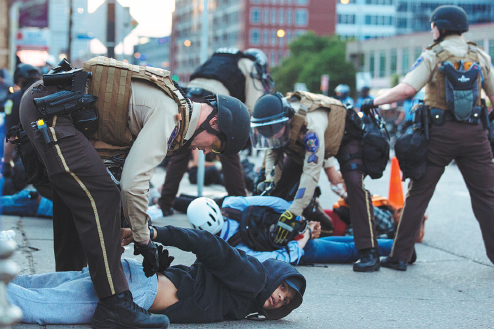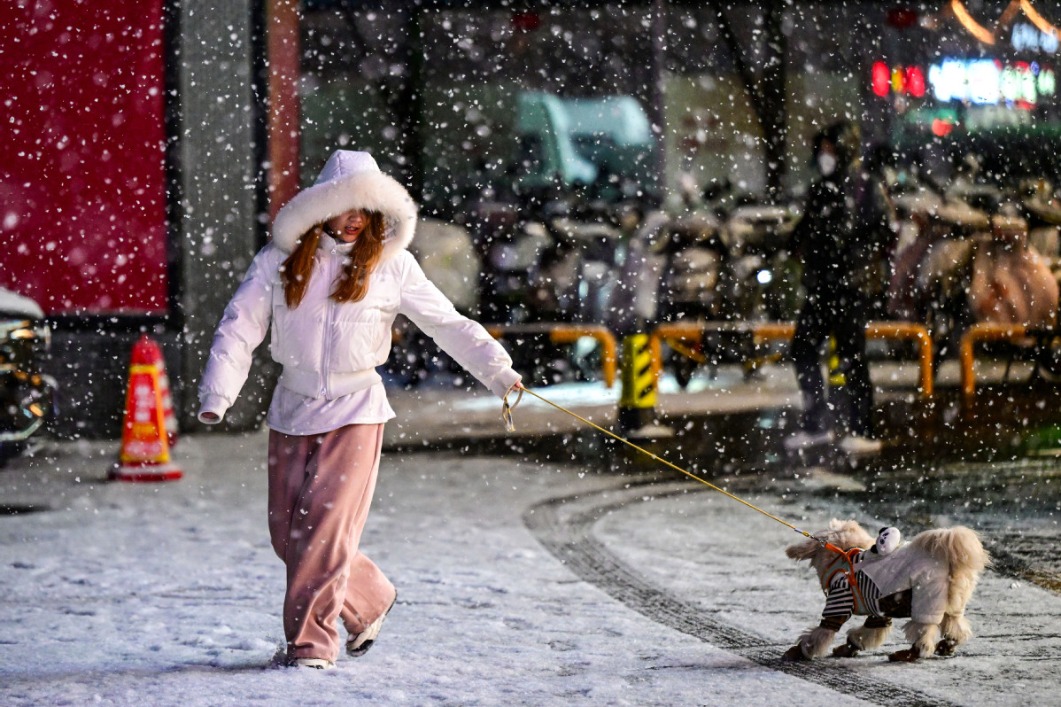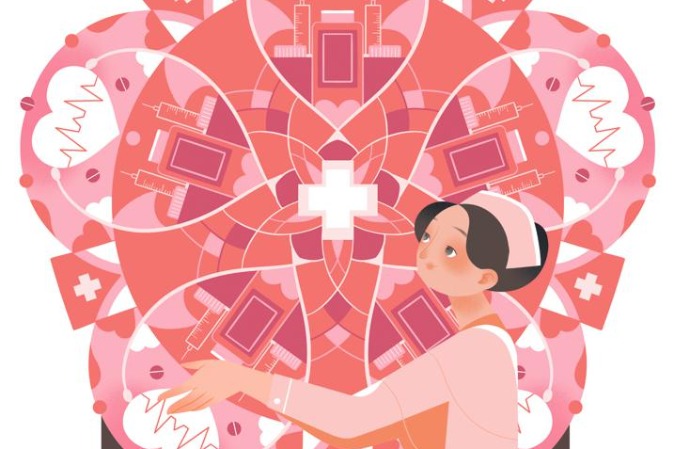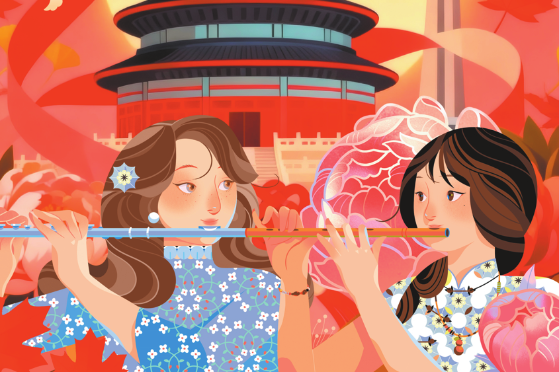Report on Human Rights Violations in the United States in 2020


III. Ethnic minorities devastated by racial discrimination
In the United States, racism exists in a comprehensive, systematic and continuous manner. Former U.S. President Barack Obama said helplessly that "for millions of Americans, being treated differently on account of race is tragically, painfully, maddeningly 'normal'." In June 2020, the UN High Commissioner for Human Rights Michelle Bachelet made two consecutive media statements, emphasizing that the protests triggered by the death of George Floyd, an African American, highlighted not only the issue of police brutality against people of color, but also inequality and racial discrimination in health, education, and employment in the United States. The grievances need to be heard and addressed if the country is to move on from its tragic history of racism and violence. On June 17, 2020, the 43rd session of the UN Human Rights Council held an urgent debate on racism. This was the first time in the history of the Human Rights Council that an urgent meeting on the human rights issues of the United States was held. On Nov. 9, 2020, the United States was severely criticized by the international community for racial discrimination when it was in the third cycle of Universal Periodic Review by the United Nations Human Rights Council. The Committee on the Elimination of Racial Discrimination of the United Nations and other institutions pointed out that racism in the United States is horrific. The white nationalists, neo-Nazis, and the Ku Klux Klan overtly use racist slogans, chants and salutes to promote white supremacy and incite racial discrimination and hatred. Political figures increasingly use divisive language in attempts to marginalize racial, ethnic and religious minorities, which amounts to inciting and fueling violence, intolerance and bigotry. Tendayi Achiume, the United Nations Special Rapporteur on contemporary forms of racism, racial discrimination, xenophobia and related intolerance, believes that for black people in the United States, the domestic legal system has utterly failed to acknowledge and confront the racial injustice and discrimination that are so deeply entrenched in law enforcement.
Rights of the American Indians were violated. The United States has carried out systematic ethnic cleansing and massacres of Indians in history, and committed countless crimes against humanity and genocides. American Indians still live a life like a second-class citizen and their rights have been trampled over. Many indigenous peoples, such as the American Indians, who live in low-income communities in the United States, suffer from higher rates of cancer and heart diseases from toxic radioactive environments. Many indigenous people live near hazardous waste disposal sites and have an abnormally high rate of birth defects. On Aug. 5, 2020, the report of the United Nations Special Rapporteur on the implications for human rights of the environmentally sound management and disposal of hazardous substances and wastes, submitted pursuant to Human Rights Council resolution 36/15, decried the situation of indigenous peoples in the United States. They are exposed to toxic pollutants, including nuclear waste, released or produced by extractive industries, agriculture and manufacturing. The soil and lead dust pollution from mining waste poses a more significant health threat for indigenous peoples in the United States than other groups. The report of the United Nations Special Rapporteur on freedom of religion or belief in accordance with General Assembly resolution 74/145 found out that the United States had opened up the lands of indigenous communities, including the Standing Rock Sioux Tribe, to investment without the communities' consent or in contravention of their customary and collective land ownership. The report of the United Nations Special Rapporteur on adequate housing as a component of the right to an adequate standard of living, released in accordance with Human Rights Council resolution 43/14, said that some of the most devastating effects of COVID-19 had been felt by racial and ethnic minorities and indigenous peoples. The hospitalization rate of Native Americans was five times that of non-Hispanic white Americans. The death rate of Native Americans also far exceeded that of white Americans.
Bullying against Asian Americans escalated. Since the pandemic began, the incidents of Asian Americans being humiliated and even assaulted in public have been found everywhere, and some American politicians have misled the public on purpose. "It's very lonely to be Asians in the United States during the raging pandemic," said a report published on the website of the New York Times on April 16, 2020. A survey of young Asian Americans showed that in the past year, a quarter of young Asian Americans became targets of racial bullying; fueled by the racist remarks of the then American leader, nearly half of the respondents expressed pessimism about their situation, and a quarter of the respondents expressed fear about the situation of themselves and their families, according to a report published on the website of the National Broadcasting Corporation on Sept. 17, 2020. Tendayi Achiume, the United Nations Special Rapporteur on contemporary forms of racism, racial discrimination, xenophobia and related intolerance, said on March 23 and April 21, 2020, that politicians of relevant countries took the initiative to make open or suggestive xenophobic remarks, adopting alternative names with ulterior motives for the novel coronavirus. Their remarks that associated a specific disease with a specific country or ethnicity were irresponsible and disturbing, according to the Special Rapporteur. U.S. government officials openly incited, induced, and condoned racial discrimination, which was tantamount to humiliating modern human rights concepts.
The high level of hate crimes highlighted the deterioration of race relations. An FBI report released in 2020 showed that 57.6 percent of the 8,302 single-bias hate crime offenses reported by law enforcement agencies in 2019 were motivated by race/ethnicity/ancestry. Of these offenses, 48.4 percent were motivated by anti-black or African American bias; 15.8 percent stemmed from anti-white bias; 14.1 percent were classified as anti-Hispanic or Latino bias; 4.3 percent resulted from anti-Asian bias. Among the 4,930 victims of racial hate crimes, as many as 2,391 were of African descent. Some Americans blamed the outbreak of the pandemic on Asian Americans, and there had been an increase in the number of hate crimes and incidents of harassment and discrimination against Asian Americans, according to a report published on the website of USA Today on May 20. Statistics from the civil rights organization Stop AAPI Hate showed there were over 2,300 anti-Asian hate crimes in the U.S. during the first seven months of 2020.
Unchecked police violence led to frequent deaths of African Americans. On March 13, 2020, Breonna Taylor, a 26-year-old African-American woman, was shot eight times and killed by police in her own home. On May 25, 2020, George Floyd, a 46-year-old African American was killed after a white policeman kneeled on his neck in the street. On Aug. 23, 2020, Jacob Blake, a 29-year-old African American, was severely injured after police officers shot him seven times in the back when Blake was getting into a car. At the time, Blake's three kids were in the car, witnessing the horrible act. American police shot and killed a total of 1,127 people in 2020, with no killing reported in just 18 days, according to Mapping Police Violence. African Americans made up 13 percent of the U.S. population, but accounted for 28 percent of the people killed by the police. African Americans were approximately three times more likely than white people to be killed by police. From 2013 to 2020, about 98 percent of the police involved in shooting cases were not charged with a crime, and the number of convicted was even smaller.
People of color were more harmed by the epidemic. The infection rate and death rate of COVID-19 in the United States showed significant racial differences, with the infection rate, hospitalization rate and death rate of African Americans being three times, five times and twice that of white people respectively, according to a report delivered by the Working Group of Experts on People of African Descent to the UN Human Rights Council on Aug. 21, 2020. "Nothing brings into sharper relief America's color disparities than life and death in the Great Lockdown," said a report published on the website of the Financial Times on May 15, 2020. Racial disparities in the epidemic extend to children, according to a report released by the U.S. Centers for Disease Control and Prevention on Aug. 7, 2020. Latino and black children were hospitalized with COVID-19 at a rate nine times and six times that of white kids, respectively. Barbara Ferrer, director of public health for Los Angeles County, said the disproportionate impact of the coronavirus on black and Latino residents is rooted in the impact of racism and discrimination on the access to the resources and opportunities that are needed to good health, according to the website of the Los Angeles Times on July 10, 2020. COVID-19 kills far more people of color than white Americans, which could be attributed to America's unequal education and economic systems that disproportionately leave people of color out of higher-wage jobs, discrimination in housing that corralled people of color into tightly packed neighborhoods, and environmental policies designed by white power brokers at the expense of the poor, an article by USA Today said. Of the 10 U.S. counties with the highest death rates from COVID-19, seven have populations where people of color make up the majority, according to data compiled by USA Today. Of the top 50 counties with the highest death rates, 31 are populated mostly by people of color.
People of color faced an even greater threat of unemployment. The Guardian commented in an article on April 28, 2020 that the "last hired, first fired" phenomenon was the most frustrating reality for African Americans. A report released by the U.S. Department of Labor on May 8, 2020 revealed the unemployment rate of African Americans and Latinos soared to 16.7 percent and 18.9 percent respectively in April, both the highest on record. The Washington Post reported on June 4, 2020 that after the Great Lockdown in spring, fewer than half of all black adults had a job. Figures released by the U.S. Department of Labor in September showed the jobless rate for the black people almost doubled that for the white. The Christian Science Monitor reported on July 20, 2020 that trade union leaders called for a national workers strike in more than two dozen U.S. cities to protest systemic racism and economic inequality that had only worsened during the novel coronavirus pandemic.
Systemic racial discrimination existed in law enforcement and justice. The Courier Journal reported on its website on Dec. 17, 2020 that although black people make up about 20 percent of Louisville's driving-age population, they accounted for 57 percent of police searches, even though the police were far more likely to find contraband in searches of white people than black people. In the past three years, black people made up 43.5 percent of arrests by the Louisville Metro Police Department. African Americans made up around 13 percent of the U.S. population, but represented almost a third of the country's prison population, which meant that there were more than 1,000 African-American prisoners for every 100,000 African American population. People of color constitute approximately one-third of the U.S. population under 18, but two-thirds of incarcerated minors, according to a report by the National Conference of State Legislatures on July 15, 2020. Iowa Public Radio News reported on Dec. 18, 2020 that in Iowa's prisons, black Iowans were imprisoned at a rate 11 times that of white Iowans. Black people were probably sentenced to a longer jail term for the same offense. The Los Angeles Times reported on Sept. 15, 2020 that black people have been over-represented on death rows across the United States and killers of black people are less likely to face the death penalty than people who kill white people. Davis Vanguard reported on Dec. 4, 2020 that people of color account for a disproportionate 43 percent of executions in the U.S. since 1976, and 55 percent of defendants currently awaiting execution are people of color. "We live in a country where our criminal justice system is defined by the size of your wallet and the color of your skin," said an article published by the Miami Herald on Dec. 18, 2020.
Workplace racial discrimination was deeply rooted. According to a CBS News report on Oct. 7, 2020, over 20 current and former black agents interviewed all described some sort of racial discrimination while in the FBI. Of the top 10 leadership positions in the FBI, all are currently held by white men. Currently, only 4 percent of the 13,000 FBI agents around the world are black, and black women only account for 1 percent, a number that has stayed virtually the same for decades. There were long-standing problems at the FBI such as the disproportionate weeding out of black applicants during the training process. As head of the FBI's Black Affairs Diversity Committee, Eric Jackson called it "institutionalized racism." According to a report by the Los Angeles Times on July 2, 2020, Facebook Inc. was accused of systemic discrimination in hiring, compensation and promotion of black people. Facebook's own figures showed just 1.5 percent of employees in technical roles in the U.S. were black in 2019, and 3.1 percent were black among senior leadership. Those percentages have barely budged even as the company's employees grew by 400 percent over the past five years.
Social discrimination against ethnic minorities was widespread. A poll conducted by the Wall Street Journal and NBC News on July 9, 2020 found that 56 percent of the U.S. voters believe American society is racist and blacks and Hispanics are discriminated against. The Los Angeles Times reported on July 14, 2020 that after the death of George Floyd, more white Americans recognized the serious racial discrimination in the United States. A July 2020 survey showed that compared with February, white respondents are 18 percentage points more likely to believe black Americans are discriminated against frequently (from 22 percent to 40 percent), 10 percentage points more likely to believe Latinos are discriminated against frequently (from 22 percent to 32 percent), and 13 percentage points more likely to believe Asians are discriminated against frequently (from 7 percent to 20 percent).
Inequality between races worsened. According to researchers from the University of Chicago and University of Notre Dame, the U.S. poverty rate jumped by 2.4 percentage points from June to November 2020, while the poverty rate among black Americans went up by 3.1 percentage points. Statistics showed the median white household has 41 times more wealth (measured as the sum of assets held by a family minus total household debt) than the median black family and 22 times more than the median Latino family. Citing data released by the Federal Reserve, the Associated Press reported on Oct. 13, 2020 that only 33.5 percent of black households owned stocks in 2019, compared with 61 percent for white households. USA Today reported on Oct. 23, 2020 that in the first quarter of 2020, the national homeownership rate for white households was 73.7 percent, but only 44 percent of black households owned a home. The Washington Post reported on June 4, 2020 that more than one in five black families now report they often or sometimes do not have enough food-more than three times the rate for white families. ABC News reported on Oct. 11, 2020 that 15.7 percent of Latinos lived in poverty in 2019, a percentage more than double that of the white people.


































